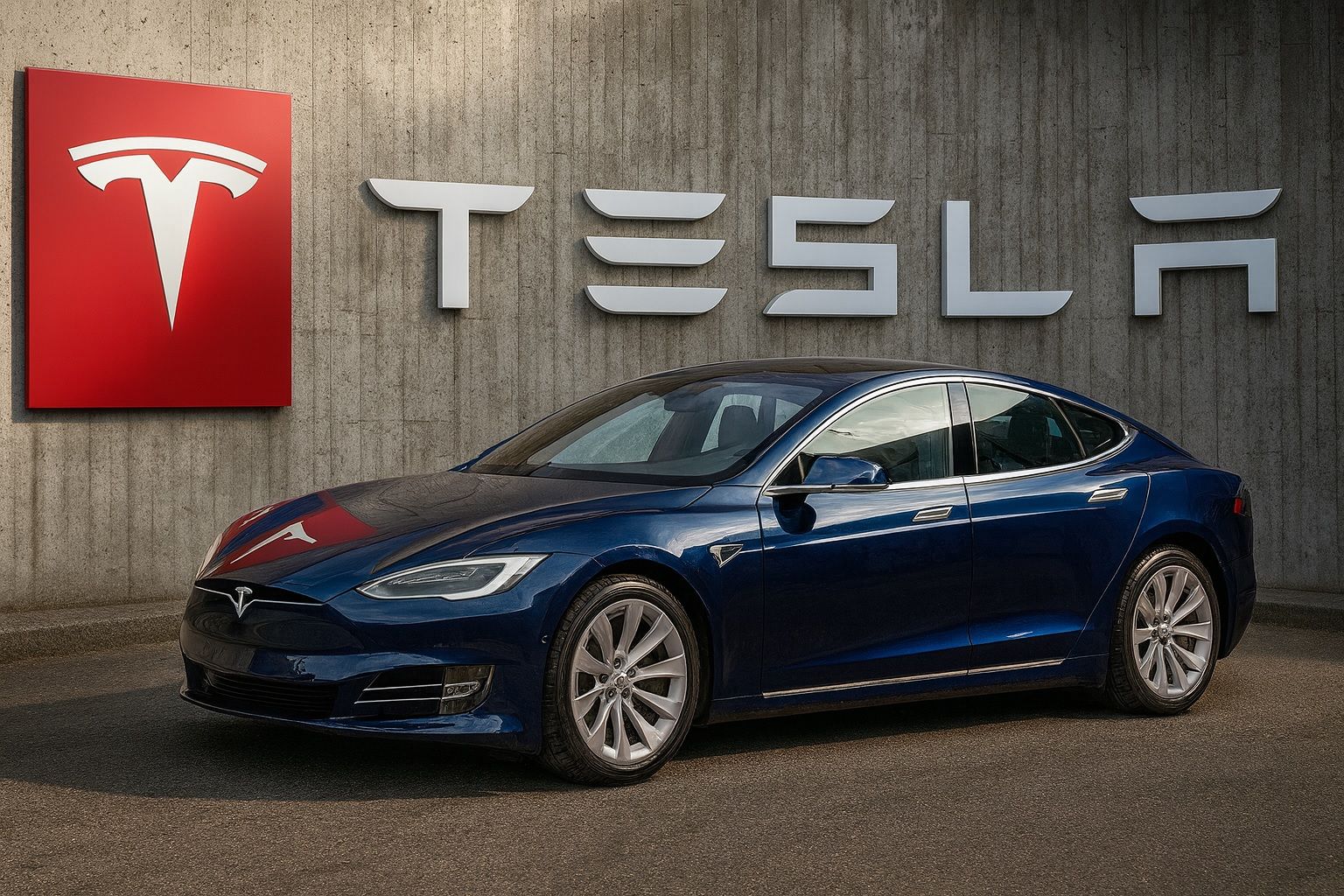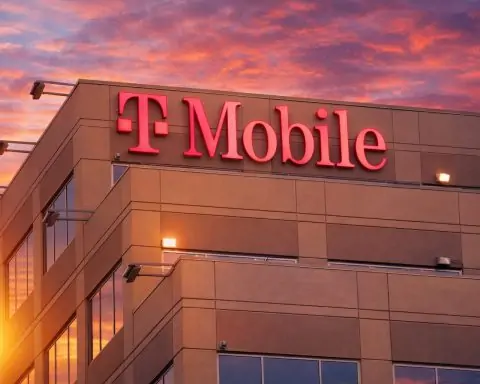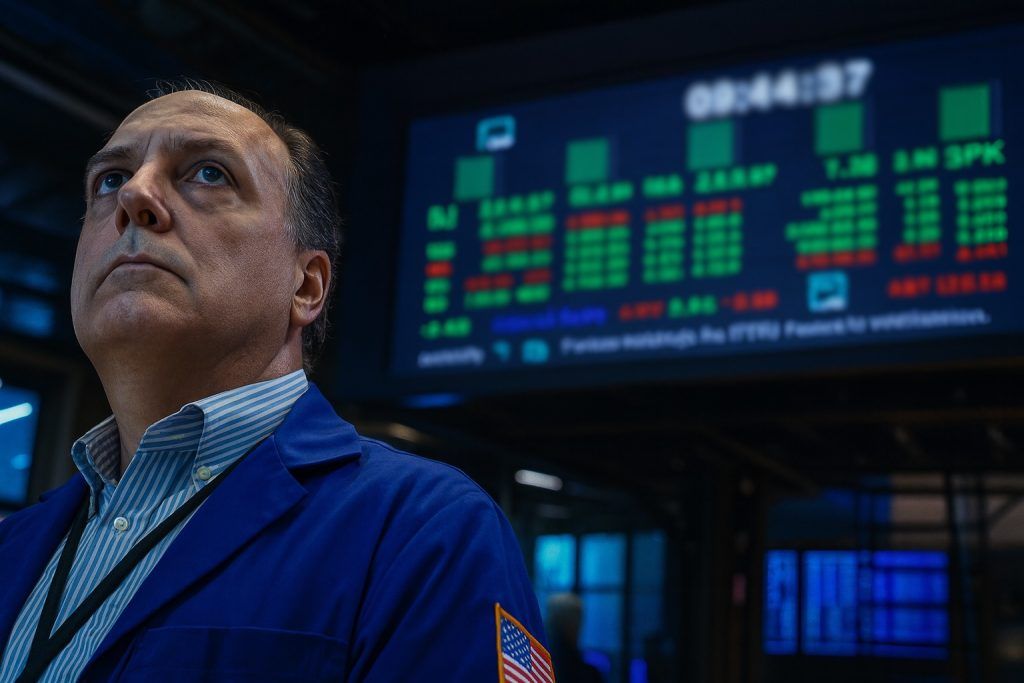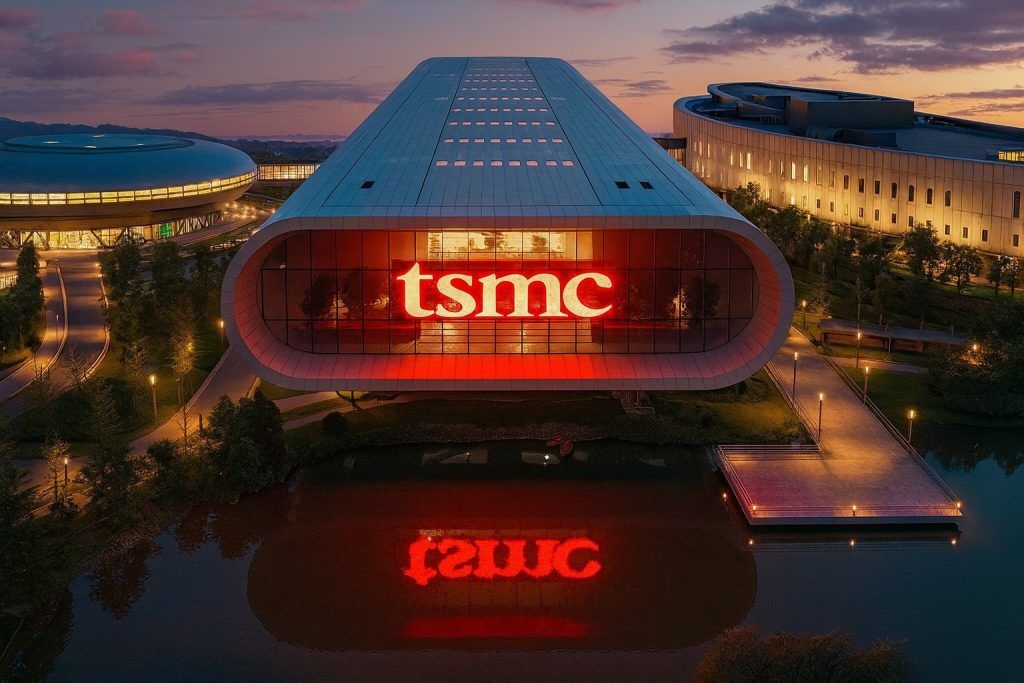Key Facts: – On Oct. 17, Tesla shares trade around $429 per share, after soaring to ~$453 on Oct. 6 (a 52-week high) and then swinging with earnings and product news [1] [2]. – Q3 2025 deliveries hit a record 497,099 vehicles (up 7.4% YoY), driven by a late-quarter rush to claim the expiring $7,500 U.S. EV tax credit [3] [4]. – New low-cost Model 3/Y “Standard” editions were unveiled on Oct. 7 (starting ~$36,990/$39,990) [5], but the modest $4–5K price cuts disappointed investors and knocked TSLA down ~4.5% on the news [6]. – Analysts remain polarized: top bulls (Wedbush’s Dan Ives) peg TSLA’s 12-month target as high as $600, while others (Morgan Stanley ~$410) are less optimistic. 45 analysts average only a ~$364 target [7] [8]. – Tesla faces regulatory and market headwinds: a new NHTSA investigation into its Full Self-Driving software (covering ~2.9 million cars) knocked shares ~2% [9], and fierce competition (from BYD, VW, etc.) is eroding Tesla’s market share [10] [11].
Stock Price and Recent Movements
As of mid‐Oct. 2025, Tesla (NASDAQ: TSLA) trades in the high-$400s to low-$500s range. Its stock has been volatile this week: for example, TSLA jumped about 5% on Oct. 13 to roughly $435.90 then pulled back ~1.5% on Oct. 14 to close near $429.24 [12]. Friday’s open was about $428.75 [13]. Year-to-date and year-on-year, Tesla is a leader in tech stocks: shares are up roughly 80% from a year ago, far outpacing the S&P 500’s ~17% gain [14]. The rally’s fueled in part by optimism about new products and AI initiatives, but Tesla’s lofty valuation (around $1.4–1.5 trillion market cap) has analysts debating whether it’s priced for perfection [15] [16].
Markets have also been choppy lately. A relief rally in growth stocks on Oct. 13 (S&P +1.6%) reversed the next day (S&P –1.3%) amid renewed U.S.–China trade jitters and rising bond yields [17]. Tesla’s swings have mirrored these currents. Some traders are betting that the Fed may cut rates by year-end, a tailwind for high-growth names like TSLA [18]. But for now, every major news item (earnings previews, regulatory probes, or product announcements) has tended to trigger big moves in Tesla’s share price.
Record Deliveries Lift Outlook – But Q4 Risks Loom
Tesla’s third-quarter deliveries surprised on the upside. The company reported it delivered 497,099 vehicles in Q3 (ended Sept. 30), a new quarterly record and about 7.4% above last year [19]. This beat Wall Street’s estimate (~443k) by a wide margin [20]. The surge came as buyers rushed in September to lock in the $7,500 federal EV tax credit before it expired [21] [22]. CEO Elon Musk and the company aggressively promoted discounts and financing deals to drive these sales.
However, many analysts caution that this pull-forward demand may leave a Q4 hangover. “The $7,500 credit definitely should have some effect that pulled forward demand this quarter,” noted Tesla shareholder Ken Mahoney (Mahoney Asset Management), who warned that the credit’s expiry “could leave a U.S. demand gap in the fourth quarter” [23]. Elliot Johnson, CIO at Evolve ETFs, also warned investors to temper expectations: “I’m skeptical that this will be sustainable and I think we could see a soft couple of quarters” [24]. Indeed, Tesla itself had forecast “a few rough quarters” after subsidies end, pending gains from its self-driving software and energy businesses [25].
On the plus side, Tesla’s energy storage arm also set a record in Q3 (deploying 12.5 GWh) and revenue is diversifying beyond cars [26] [27]. Still, investors will be watching the Oct. 22 earnings report closely for profit margins. Tesla had slashed prices to boost deliveries last quarter – auto gross margins were already in the mid-single digits – so the question is whether profits hold up as volume peaked [28] [29]. Most analysts expect solid revenue but warn margins could be squeezed by all the incentives.
New “Affordable” Models and Market Reaction
Tesla formally rolled out lower-priced versions of its best-sellers on Oct. 7 (USA) and Oct. 10 (Europe). The Model Y Standard now starts at ~$39,990 (Model 3 Standard at ~$36,990) [30], with slightly fewer features (e.g. no Autosteer, fewer speakers) to hit the lower price point [31]. Musk has framed this as key to reaching more buyers (he has said a true sub-$30K car is needed), but analysts viewed the cuts as modest. “Disappointed” was the word Wedbush’s Dan Ives used after the announcement – these new trims were only ~$5K cheaper than existing midspec versions [32]. The market’s verdict was tepid: TSLA stock tumbled ~4–4.5% on Oct. 8 when the details were released [33].
Still, as one Tesla analyst at TechStock² (ts2.tech) put it, the week’s narrative was “record sales + ‘affordable’ trims”. The ts2.tech report cautioned that the pricing shift is “basically a lever and not much of a product catalyst,” meaning the company is using price cuts to drive demand rather than releasing a breakthrough new vehicle [34] [35]. It highlighted that while the discounts helped hit delivery targets, they could compress margins and only spur one-time demand. Many Tesla bulls agree that a truly mass-market Tesla (somewhere in the $25–30K range) is still needed long-term to fend off cheaper rivals.
On balance, the new models underscore Tesla’s strategy to defend market share. Competition is fierce: in China, Tesla’s smaller Model Y L (a six-seater version) and refreshed Model 3/Y are helping sales [36]; in Europe and the U.S. Tesla faces new plug-in hybrids and aggressive pricing from legacy automakers. For example, Norway – an EV leader – just announced it will phase out its main EV tax incentive over two years, which will drive up costs for buyers of cars like Tesla’s Model Y [37]. Tesla’s share of the European EV market has already fallen: its European sales were down ~22.5% in August, leaving it with only about 1.5% of the region’s booming EV market [38]. That share erosion highlights how even as global EV sales hit records (2.1 million units in Sept., +26% YoY [39]), Tesla must defend itself on multiple fronts.
Analyst Outlook: Split Verdict on Tesla
Wall Street is deeply divided on TSLA. On the bullish side, firms cite Tesla’s dominant technology and growth avenues. Morgan Stanley reiterated an Overweight rating with a ~$410 price target, Piper Sandler raised its target to $500, and Wedbush’s Dan Ives still pegs fair value at $600 [40]. They point to Tesla’s gains in EV share, its booming energy business, and potential upside from self-driving software and robotaxis as justifying a rich multiple (Tesla trades ~250× forward earnings) [41] [42]. Morningstar analyst Seth Goldstein even observed that “If the software works, [a] Tesla robotaxi could drive any road in the world,” underscoring the stock’s AI/automation premium [43] (though he also noted Tesla is still “testing the product”).
On the bearish side, skeptics flag Tesla’s sky-high valuation and near-term uncertainties. The average 12-month analyst target is only about $364, implying downside from current levels [44]. Roughly half of analysts rate TSLA as “Hold” or “Sell,” and even some of the bulls acknowledge risks. For example, HSBC Research has a Reduce (Sell) rating with a very low $127 target [45]. Analysts like Matt Britzman of Hargreaves Lansdown point out that Tesla’s main challenge is to manage a post-credit slowdown – “that’s where a new, more affordable model becomes crucial to keeping momentum going,” he said [46]. In short, Tesla’s outlook depends critically on whether it can sustain growth without constant incentives, fend off competition, and eventually deliver its self-driving promise.
Macro, Market and AI Factors
Tesla’s stock is not in a vacuum. Broad market trends and the EV industry environment are major factors. Economists note that traders are currently expecting the Federal Reserve to start cutting interest rates by year-end; if so, that could fuel a late rally in high-growth tech stocks like Tesla [47]. But conversely, any flare-up in U.S.–China tensions (such as trade or tech disputes) tends to spook global stocks and could weigh on Tesla, which has large exposure to both markets.
Importantly, demand for electric vehicles is surging overall. Research firm Rho Motion reported a record 2.1 million EVs sold worldwide in September alone [48], driven by Chinese government incentives and a U.S. tax-credit rush. China accounted for roughly two-thirds of that volume [49]. Tesla has benefited from strong Chinese sales: its Shanghai-made EV deliveries rose ~2.8% in September (reversing a summer dip) thanks in part to the new six-seat Model Y L variant [50]. BYD – Tesla’s big Chinese rival – even saw its first quarterly sales decline since 2020, suggesting that the Chinese EV boom might be peaking [51].
Still, competition is intensifying. Legacy automakers (BMW, Volkswagen, Ford, GM, etc.) are launching dozens of new EV models. Chinese makers (BYD, Xpeng, Nio, etc.) continue to expand globally. Each of these adds pressure on Tesla’s future growth and pricing power. On the regulatory front, Tesla also faces wildcards: the new U.S. probe into its Full Self-Driving system (over reports of cars running red lights) highlights potential legal risks [52]. Reuters noted that when the FSD probe was announced (Oct. 9), TSLA shares immediately fell ~2% [53]. Although that may seem small, it underscores that “regulatory and legal issues (from Autopilot safety to CEO Elon Musk’s antics) remain wild cards for the stock,” as one analysis put it [54].
Finally, Tesla is increasingly seen as an AI/tech stock as much as a carmaker. Musk’s pivot toward self-driving robotaxis and even humanoid robots is intended to create new revenue streams. But experts caution that such dreams take time. As Tesla’s own filings and analysts’ reports stress, the key battles are still over core profits and competition in today’s EV market [55] [56].
Bottom line: Tesla’s stock is trading near its highs amid a flurry of news – record deliveries and a push into cheaper models – but investors remain split. With Q3 earnings due Oct. 22 (after the market close), all eyes will be on the financials for confirmation that booming deliveries have translated into healthy profits. Until then, the swings are likely to continue as traders digest every update on EV demand, market strategy, and Musk’s next big ideas [57] [58].
Sources: Recent Tesla news and analysis from Reuters, MarketBeat, ts2.tech and company filings [59] [60] [61] [62], as well as expert commentary from analysts [63] [64].
References
1. ts2.tech, 2. www.marketbeat.com, 3. www.reuters.com, 4. ts2.tech, 5. www.reuters.com, 6. www.reuters.com, 7. ts2.tech, 8. www.marketbeat.com, 9. www.reuters.com, 10. www.reuters.com, 11. www.reuters.com, 12. ts2.tech, 13. www.marketbeat.com, 14. ts2.tech, 15. ts2.tech, 16. www.marketbeat.com, 17. ts2.tech, 18. ts2.tech, 19. www.reuters.com, 20. ts2.tech, 21. www.reuters.com, 22. ts2.tech, 23. www.reuters.com, 24. www.reuters.com, 25. www.reuters.com, 26. ts2.tech, 27. www.reuters.com, 28. www.reuters.com, 29. ts2.tech, 30. www.reuters.com, 31. www.reuters.com, 32. www.reuters.com, 33. www.reuters.com, 34. ts2.tech, 35. ts2.tech, 36. www.reuters.com, 37. www.reuters.com, 38. www.reuters.com, 39. www.reuters.com, 40. ts2.tech, 41. ts2.tech, 42. www.reuters.com, 43. www.reuters.com, 44. www.marketbeat.com, 45. ts2.tech, 46. www.reuters.com, 47. ts2.tech, 48. www.reuters.com, 49. www.reuters.com, 50. www.reuters.com, 51. www.reuters.com, 52. www.reuters.com, 53. www.reuters.com, 54. ts2.tech, 55. www.reuters.com, 56. ts2.tech, 57. ts2.tech, 58. ts2.tech, 59. www.reuters.com, 60. www.reuters.com, 61. www.reuters.com, 62. ts2.tech, 63. www.reuters.com, 64. ts2.tech







